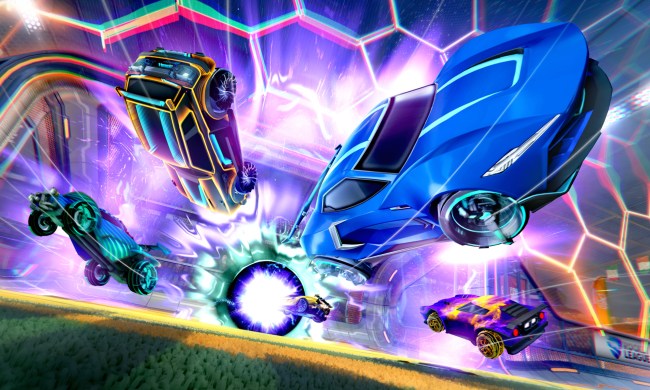
Every entertainment medium uses genres to help people understand what a game or movie or song will be like before experiencing it. In a sea of nearly limitless content, this is essential for allowing people to more easily find the things they are interested in — and to avoid the ones they aren’t. However, genres also need to be broad enough to still be useful, meaning most things don’t fit perfectly into any one box. Games are in an even trickier situation since genres can not only describe the tone and target audience, but also how the game is played. This has created a whole new set of genres and subgenres exclusive to games that can be quite confusing. We’ll go over the most recognized video game genres, as well as some subgenres within them, to explain what they are and give some examples.
While we will do our best to organize games and genres in a logical way, it is still a subjective practice.
Action

Action is about the broadest genre there is in games, and it tends to be an element in most other genres as well. Action games encompass any game that focuses primarily on the player-controlled character engaging in some form of combat with opponents. This could be with swords, fists, magic, or anything else. There can be a story, but it tends to be secondary to the moment-to-moment gameplay. A few notable examples would be Devil May Cry, Dead Cells, Bloodborne, Spider-Man, Street Fighter, and Ninja Gaiden.
You can basically stick the word “action” onto any other genre and have a valid subgenre, but some examples are action-adventure, fighting, character action, arcade action, and action RPGs.
Adventure

Technically, the adventure game might be the oldest video game genre there is. It was originally used to define a very specific type of game, but has now become just as broad as action as the medium has evolved. In the most general terms, adventure games are trying to engross you in a world or narrative where action is either secondary or even nonexistent. Text adventures were the first examples, followed by point-and-click games. The adventure doesn’t need to have a large world, though it can, and tends to give the player a lot of freedom in how they explore or engage with the world. Some examples would be The Legend of Zelda: Breath of the Wild/ Tears of the Kingdom, Myst, Until Dawn, Metroid, and Red Dead Redemption.
There are tons of subgenres in the adventure category. We still get the original text adventures, but there are newer iterations like visual novels and interactive movies. Metroidvanias can also fit here depending on the game, as well as horror and open-world games. Again, there’s an argument to be made that most games can technically fit within the adventure genre.
Platformer

The first genre we’ll talk about named after a mechanic is one of the oldest in the industry: platformers. These games are all about giving the player a virtual obstacle course to navigate, typically through jumping, but not always. Platformers can be level-based or open-world, but the point is that the mechanics are centered around the player’s ability to navigate through a space. You can already guess that Mario games would fall into this camp, but other examples include Celeste, Donkey Kong, Kirby, Mega Man, Ratchet and Clank, and Sonic.
Platformers are a bit more strict in terms of what qualifies as a pure platformer, but plenty of games will still incorporate platforming elements. The main subgenres here are action platformers, Metroidvania, 2D and 3D platformers, and auto-runners.
Puzzle

Puzzle games are all about testing your brainpower. In a game like this, all your progress is dependent on you understanding and learning the mechanics to crack some puzzle, typically without much of any danger to your character or the need to execute precise inputs. Some games may implement some time constraint or a limited number of moves, or even a challenge to solve puzzles before an opponent. You may not even play as a character in a puzzle game, but simply as yourself interacting with the game just like a puzzle in real life. Puzzle games can be as simple as games based on existing puzzle formats like Sudoku and Crosswords, or ones that can only exist as games like Fez, SpaceChem, Portal, and Baba is You.
Subgenres in the puzzle space include logic puzzles, physics puzzles, hidden objects, puzzle platformers, matching games, and more.
Role-playing game

Tons of games have RPG elements these days, but not all games are RPGs. This genre comes from games attempting to replicate Dungeons & Dragons and mostly share the common element of embodying the player in a character that will grow in strength or ability over the course of an adventure. This can be through XP and levels, or finding new gear and equipment. You may create your own character where you’re free to build their playstyle and personality as you like or embody a set character. Some games even let you control more than one character, but the point is mainly on some form of character-specific progression. Examples include Baldur’s Gate 3, Final Fantasy, Like a Dragon, Dragon Quest, Skyrim, Fallout, and basically all MMOs.
Role-playing subgenres include action RPGs, MMORPGs, tactical RPGs, turn-based RPGs, open-world RPGs, and more.
Strategy

Not to be confused with puzzle games, strategy games are usually about managing one or more units toward some goal or the defeat of an enemy force. Combat isn’t required, but is a common theme as you would expect. These can be turn-based or real time and are generally played from either a third-person view, an isometric viewpoint, or most commonly, a very high perspective. Some examples include Civilization, XCOM, Sim City, Starcraft, and Fire Emblem. Note that there are a lot of ways to make a strategy game that goes beyond simply moving units. Games like Frostpunk can be more about managing complex systems than controlling people directly.
There are a wide range of strategy subgenres, but the most notable are 4X, RTS, grand strategy, turn-based tactics, and tower defense.
Shooter

Shooters may have once fit into the action genre, but have grown so big and created enough subgenre to warrant being a genre all its own. Whether you’re in first-person or third-person, shooters are all about, well, shooting. Guns are typically the go-to weapon in these games, but they can also include bows, magic, and any other projectile. There’s no doubt you know the big shooter names like Doom, Halo, Call of Duty, Gears of War, and Counter-Strike.
The primary subgenres within shooters are first- and third-person, but there are also tactical shooters, hero shooters, shoot ’em, ups, looter shooters, extraction shooters, and even light gun games.
Sports

If there’s a real-world sport, odds are there’s a video game version of it. This is the easiest genre to understand since the games are primarily just translations of a real activity. That said, we do get plenty of games that make up their own sports or put new wrinkles on existing ones. These are your Maddens, FIFAs, NBA 2K, and NHL games, but also Mario Golf and Kart.
Technically, each individual sport would be a subgenre under the larger sports banner. That would be football, hockey, and racing, as well as any arcade or simulation versions.



